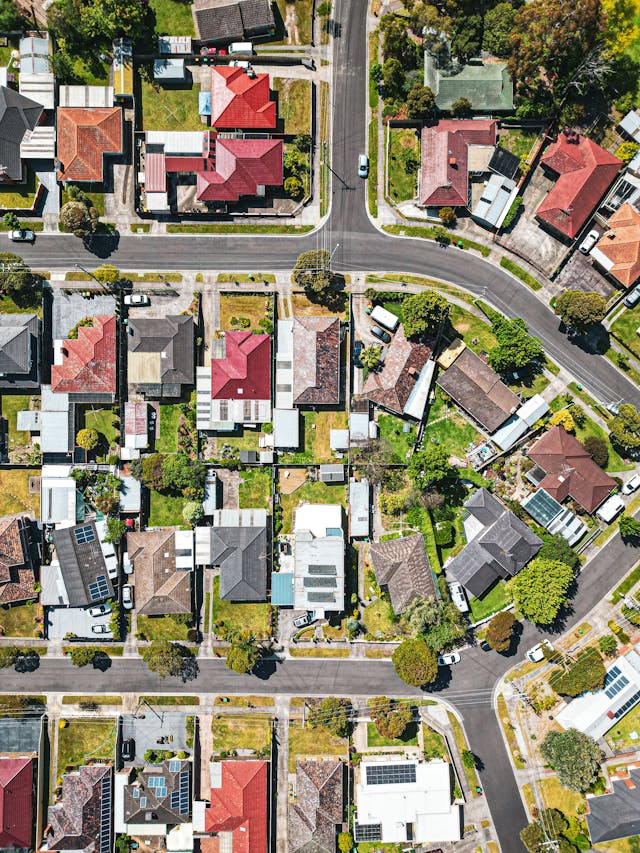
If you own property in Australia, there's a good chance your home's value is being quietly undermined by a crisis most homeowners don't even realise is happening.
Climate Council research has found that flood risk has cost Australians $42.2 billion overall, with one in six homes at risk of flooding today, yet many property owners remain completely unaware their most valuable asset is being steadily devalued by something they can't control.
The numbers tell a stark story. In affected regions, a typical three-bedroom, two-bathroom house at risk of flooding sold for $75,500 less than a comparable home without flood risk in the 12 months to April 2025—an 8.5% difference in median values.
For Australian seniors who've spent decades building wealth through property ownership, this represents a significant erosion of retirement security.
Queensland and NSW bearing the brunt
Queensland accounts for the largest share of these losses, with homeowners in the state seeing a combined $19 billion reduction in property values as of April 2025.
NSW follows closely at more than $14 billion, while Victoria trails with $5.6 billion in flood-related value losses.
'Our homes are our most prized assets but we're increasingly being dealt a losing hand when it comes to worsening climate risk.'
The impact isn't limited to modest suburban homes. In Queensland's Mermaid Beach—Broadbeach, flood-prone homes are valued 48% lower than comparable properties outside flood zones, despite only 16% of houses being classified as flood-prone.
Even affluent areas like NSW's Bellevue Hill and Balmain show large average dollar value losses per flood-affected house.
The double burden of insurance costs
Beyond the property value hit, homeowners in flood-prone areas face another financial challenge that many don't factor into their calculations: insurance premiums.
The reduced price tag is not worth the extra risk and can burden buyers with long-term insurance costs, according to University of Technology Sydney research.
The numbers are eye-watering. In Richmond, median-priced homes in the AEP 100 zone have an estimated flood premium potentially as high as $4,606 annually, compared to much lower premiums for properties without flood risk.
Understanding flood risk zones
AEP 100: 1% chance or 1-in-100-year flood risk
AEP 500: 1-in-500-year flood risk
AEP 1000: 1-in-1000-year flood risk
The higher the risk, the more significant the property discount and insurance costs.
This creates a vicious cycle. If you're in a flood risk zone, you find it's harder to insure your house, or you can't insure your house.
So when a catastrophic flood comes, you have far less resilience to that flood event. You potentially can't rebuild your property.
The wealth gap widens
What makes this crisis particularly concerning for older Australians is how it compounds existing inequalities.
Many of the regions are already lower socioeconomic zones, and McKenzie said people should not be lured by the promise of cheaper homes.
Flood risk is also deepening economic inequality, with some of the largest drops in value concentrated in lower-income areas, and we can expect this to get worse unless we make deep cuts to climate pollution this decade.
Yet the problem isn't confined to struggling communities. Even high-value areas and prestigious inner city or coastal communities can experience losses of more than half a million dollars per flood-prone home compared to nearby properties not at risk.
The hidden erosion of wealth
Perhaps most troubling is how overall rising property prices are masking the fact that flood-prone homes are starting from a lower base and rising at a slower pace.
Many homeowners may feel their property values are healthy because they're still increasing, without realising they're falling behind comparable properties.
The scale of Australia's flood-related property value crisis
- Over 2 million Australian homes affected by flood risk
- $42.2 billion in combined property value losses
- $75,500 average discount for flood-prone homes
- 22 percentage point growth gap between safe and flood-prone properties since 2000
- Queensland hit hardest with $19 billion in losses
The evidence shows this gap has been growing significantly. Nationally, since 2000, the price growth gap between flood-prone homes in Australia—and those without such risks—has reached 22 percentage points.
Regional variations tell different stories
Interestingly, not all flood-prone areas are seeing the same impacts. In some regions, the risk of flooding is outweighed by features like coastal views and beachside lifestyle.
Noosaville and Noosa Heads were two places where coastal vistas and an enviable beach lifestyle outweighed the risk of flooding.
However, Climate Council CEO Amanda McKenzie suggests this is likely because 'people don't fully appreciate the risks yet'.
As awareness grows and climate-driven flooding becomes more frequent, even these premium locations may see their flood risk properly priced into property values.
What this means for your future
Looking ahead, the situation is likely to worsen. The government-commissioned National Climate Risk Assessment found that by 2050, climate change could decrease property values by more than $600 billion. As climate-driven floods become more frequent and severe, more properties could face steeper penalties.
For seniors considering their housing options, this presents both challenges and opportunities for informed decision-making.
Assessing climate-related risks will become a standard part of property due diligence. Assessing potential risks and hazards, such as flooding, is becoming an increasingly critical step at many stages of the property journey.
Whether you're currently in a flood-prone area or considering a move, there are steps you can take:
Check flood maps through your local council or the NSW flood data portal
Factor insurance costs into any property purchase decisions
Consider the long-term implications of climate change on your area
Don't be swayed purely by lower purchase prices in flood zones
If selling a flood-prone property, be prepared for longer settlement periods and more cautious buyers
Did you know?
Research shows that houses in flood zones discount by about 10% compared to nearby properties, but this discount doesn't cover the extra insurance costs homeowners face, meaning flood-prone properties are often still overvalued relative to their true long-term costs.
The insurance industry and banks are already adapting to these new realities. The insurance and banking industries are already embedding those climate risks into their business decisions. As lenders become more cautious about flood-prone properties, securing finance may become increasingly difficult.
This isn't just about individual property values—it's about the broader economic impact on Australian communities. It also costs everyone in rising repair costs, recovery costs and insurance premiums.
Climate Council's Amanda McKenzie emphasises that every Australian deserves to understand the climate risk that their home is already facing, as well as how those risks might increase.
For older Australians who may have significant wealth tied up in property, this information is crucial for making informed decisions about their financial future.
What's your experience with flood risk and property values? Have you noticed changes in your local area, or are you considering the flood risk when looking at properties? Share your thoughts and experiences in the comments below.







